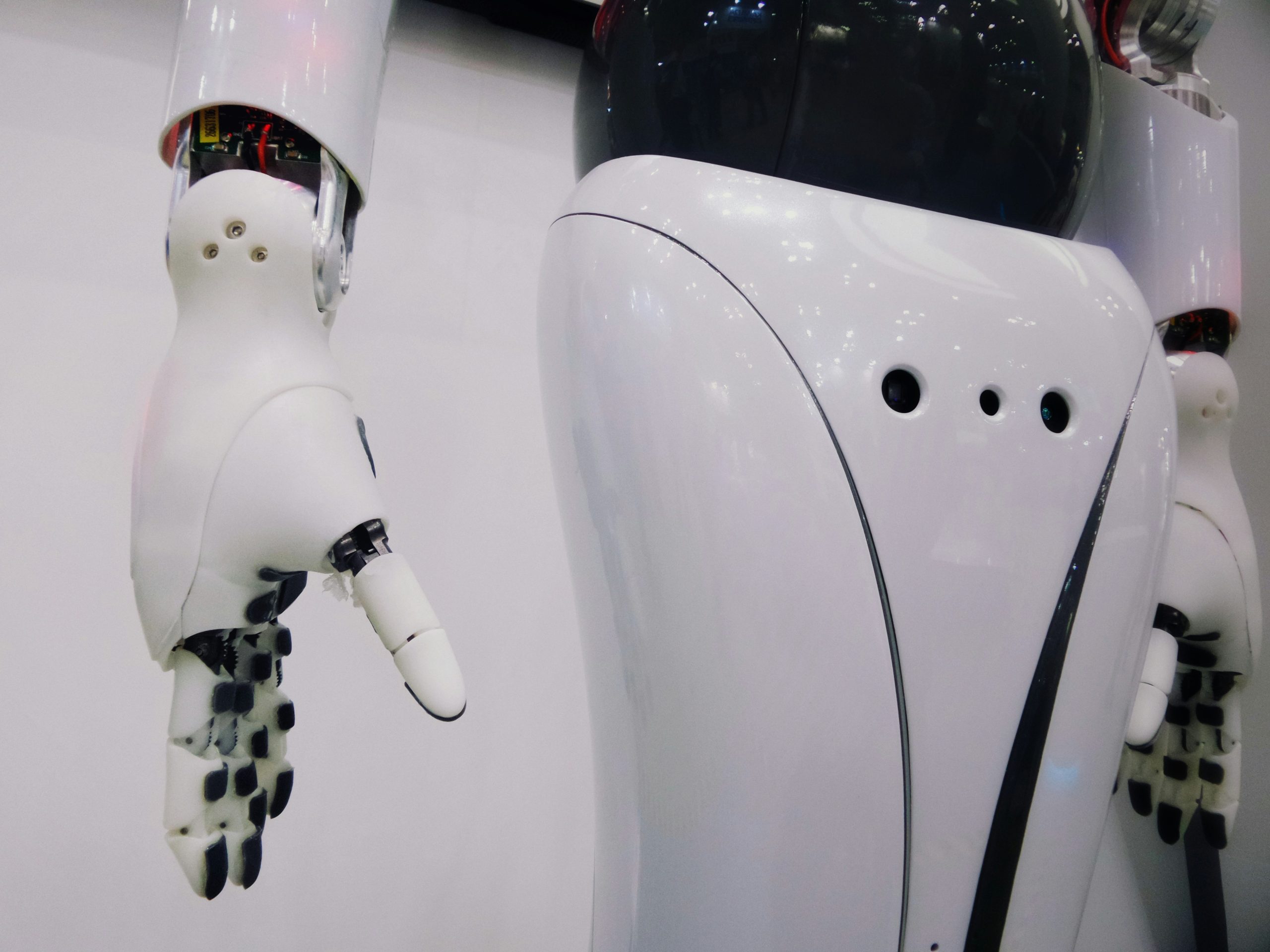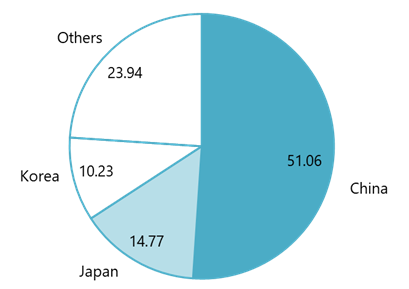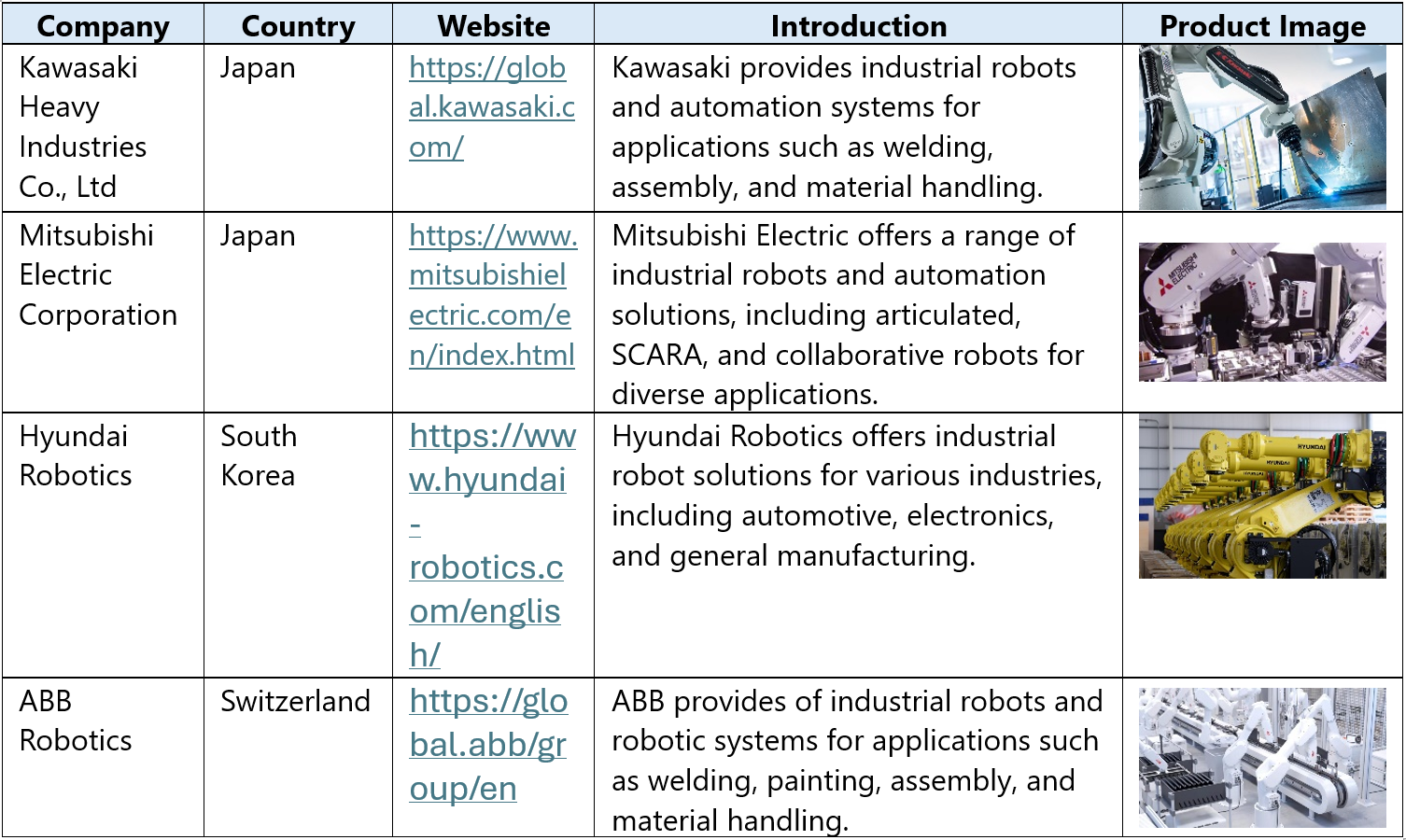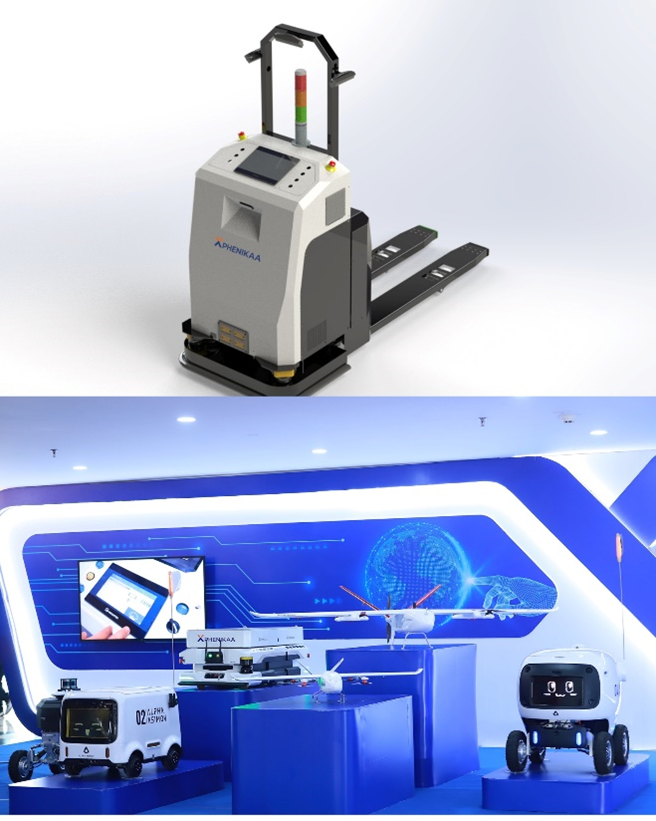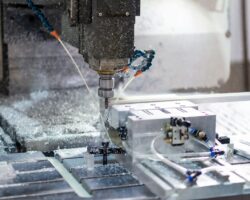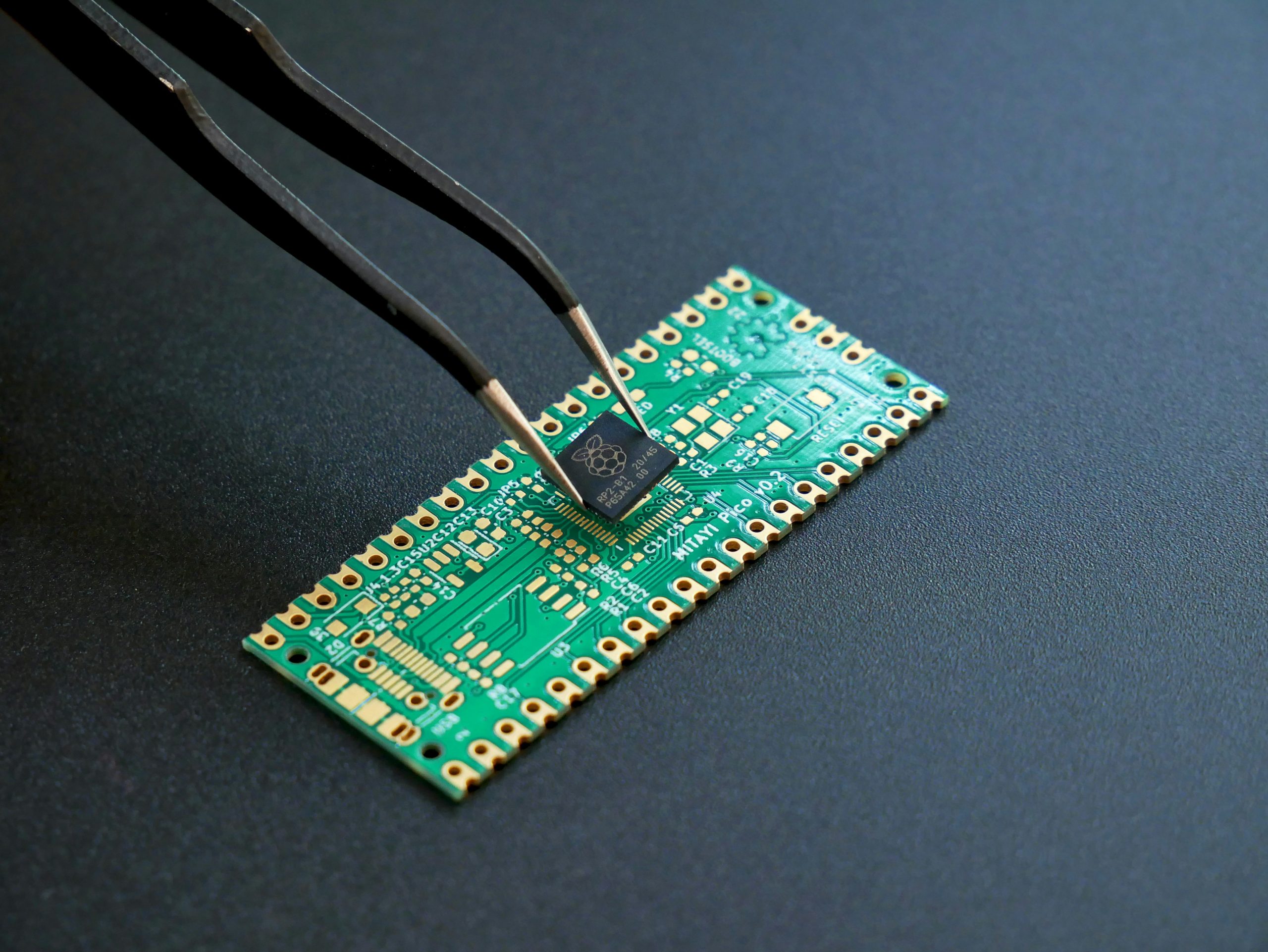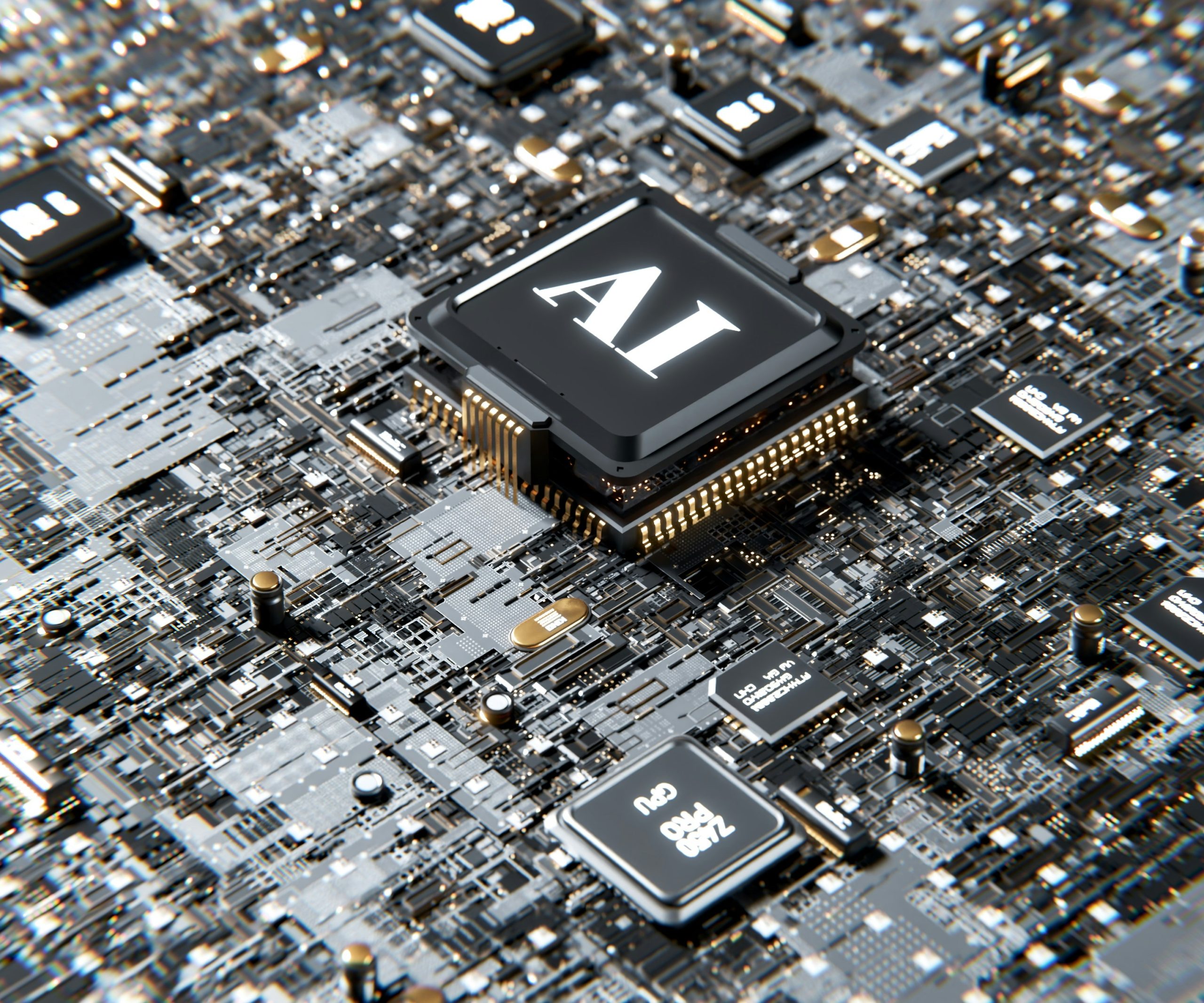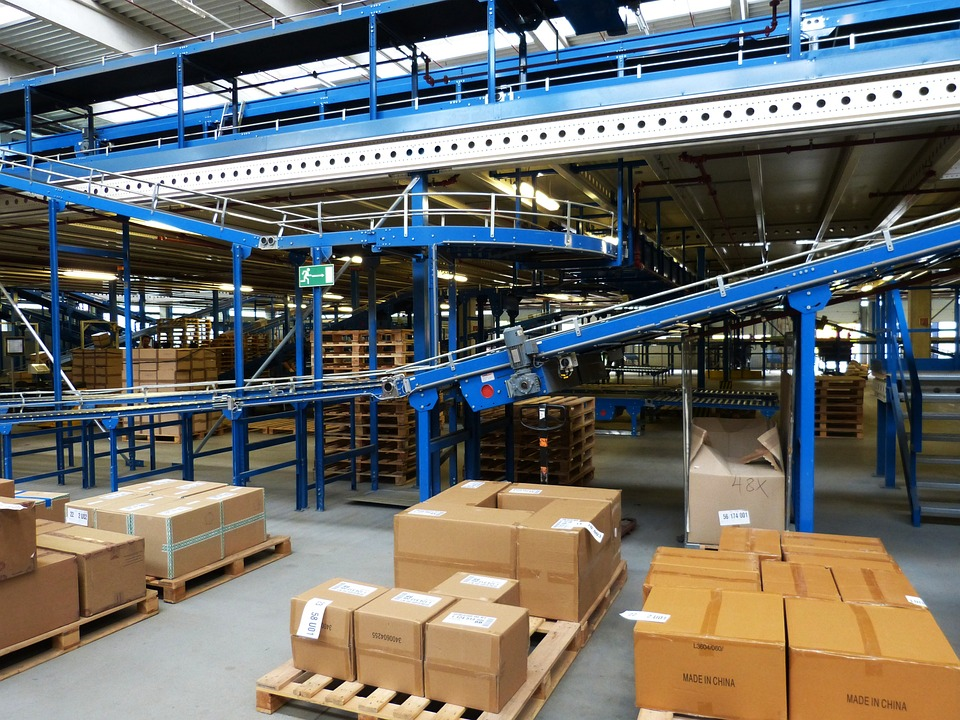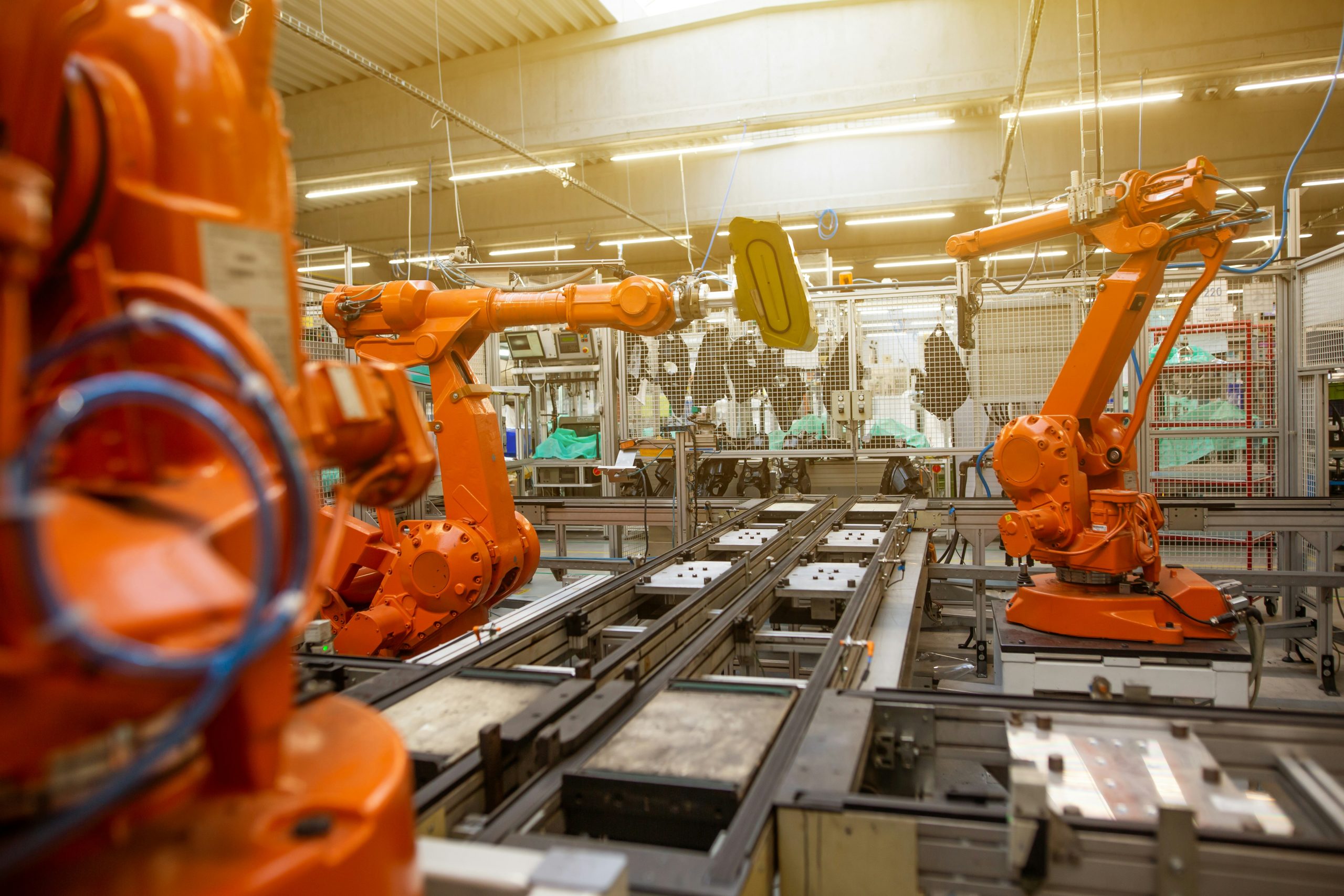베트남은 글로벌 제조업의 핵심 플레이어가 되었으며, 전기 및 전자(E&E) 산업이 경제 성장의 초석으로 부상했습니다. 이 산업의 급속한 확장은 삼성, 인텔, 폭스콘 등과 같은 주요 다국적 기업이 생산 시설을 설립함으로써 촉진되었으며, 이는 베트남의 경쟁력 있는 노동 비용, 전략적 지리적 위치, 지원적인 정부 정책에 매료되었습니다. 베트남은 경쟁 우위를 유지하고 빠르게 변화하는 글로벌 시장의 본질에 적응하기 위해 전자 부품 및 장치 생산에 있어 효율성과 정밀성 측면에서 필수적인 이점을 제공하는 산업용 로봇에 점점 더 관심을 기울이고 있습니다.
현재 상황
최근 몇 년 동안 베트남의 E&E 산업, 특히 대형 다국적 기업에서 산업용 로봇 사용이 더욱 보편화되었습니다. 삼성, LG, 파나소닉, 인텔과 같은 이러한 회사는 베트남 제조 공장에서 첨단 로봇 시스템에 많은 투자를 했습니다.
이러한 발전에도 불구하고 베트남의 로봇 시장은 로봇 산업이 더 성숙한 국가에 비해 상대적으로 미개발된 상태로 남아 있습니다. Statista에 따르면, 전기/전자 산업 로봇이 베트남의 산업용 로봇 시장을 지배하고 있으며, 2023년에 큰 감소를 겪었지만, 2024년에는 1억 6,720만 달러의 매출을 올릴 것으로 예상됩니다.[1].
전기/전자 산업의 로봇공학 수익(2016-2024)
단위: 백만 달러
출처: Statista
베트남의 E&E 산업에서 사용되는 로봇의 대부분은 중국, 한국, 일본에서 수입되며, 이들 모두 로봇 제조에 대한 명성을 확립했습니다. 아래 차트는 2022년 베트남으로 수입된 산업용 로봇의 비율을 보여줍니다.
Percentage of industrial robots imported to Vietnam (2022)
100% = 175.81천 달러
출처: ICT 무역 지도
주요 플레이어
베트남의 산업용 로봇 분야에서 국내 시장은 주로 외국 브랜드가 주도하고 있으며 상당한 시장 점유율을 차지하고 있습니다. 이러한 회사는 베트남의 빠르게 성장하는 제조 산업, 특히 전자, 자동차 및 섬유 산업의 수요를 충족하도록 맞춤화된 고급 고품질 로봇 솔루션을 제공합니다. 몇몇 베트남 회사가 이 분야에서 부상하고 있지만, 그들은 여전히 개발 초기 단계에 있으며 종종 본격적인 제조보다는 수입 구성 요소를 조립하는 데 중점을 둡니다.
아래 표는 베트남 산업용 로봇 제조 산업의 주요 참여자 중 일부를 강조합니다.
출처 : B&Comany의 종합
수입 기술에 대한 이러한 의존은 현지 로봇 개발 역량의 부족을 보여주지만 베트남 정부가 산업 역량을 발전시키려는 의지를 보여줍니다. "Made in Vietnam 4.0" 전략과 같은 이니셔티브는 로봇을 포함한 첨단 기술을 제조에 통합하여 국가를 Industry 4.0으로 추진하는 것의 중요성을 강조합니다. 정책 지원 외에도 베트남의 교육 기관은 기술 중심 경제를 위한 미래 인력을 준비하는 역할을 시작했습니다. 그러나 이러한 분야에서 교육을 받은 현재 근로자 풀은 여전히 적고, 베트남은 첨단 로봇 시스템을 설치, 유지 관리 및 운영하기 위해 계속해서 외국 기술자에 의존하고 있습니다. 외부 전문 지식에 대한 이러한 의존은 현지 노동 시장의 상당한 기술 격차를 강조하며, 이는 베트남에서 자립형 로봇 산업의 발전을 방해합니다.
성장 가능성
이러한 어려움에도 불구하고 베트남 E&E 산업 내 산업용 로봇의 성장 잠재력은 상당합니다. 전자 산업은 약 17.8% 통계청의 2023년 자료에 따르면 베트남 제조업의 1위입니다. 최근 몇 년 동안 여러 주요 전자 회사가 공급망의 일부를 베트남으로 이전했습니다. 특히 LG의 스마트폰 생산은 한국에서 하이퐁으로 전부 이전했습니다. Apple은 AirPods 생산의 일부를 이전했고 Nintendo도 Switch Lite 게임 콘솔의 일부를 베트남으로 이전했습니다. 게다가 주요 Apple 공급업체인 Foxconn은 올해 초 베트남에 2억 4,600만 달러 규모의 두 개의 신규 시설에 투자하도록 승인을 받았습니다.[2]. 가전제품, 스마트 기기, 통신 장비를 포함한 전자 제품에 대한 글로벌 수요는 향후 10년 동안 계속 증가할 것으로 예상됩니다.
최근, Phenikaa-X JSC(Phenikaa Group의 일원)는 "Make in Vietnam" 지능형 자동화(IA) 로봇 솔루션의 선도적 공급업체로, 공식적으로 Samsung Electronics Thai Nguyen Factory(SEVT)에 지능형 자동화 로봇을 공급했습니다. 이를 통해 SEVT는 Samsung Electronics에서 전 세계적으로 AMR Pallet Mover 로봇을 운영에 도입한 최초의 공장이 되었으며, 작업자가 무거운 작업을 돕고 비용 최적화와 생산 및 비즈니스 효율성 개선에 기여했습니다.[3].
남은 과제들
베트남의 E&E 산업에 로봇공학을 접목하는 데 있어 진전이 이루어졌음에도 불구하고 여전히 큰 과제가 남아 있습니다. 첫째로, 로봇 시스템을 도입하는 데 드는 높은 비용. 결과적으로 베트남의 E&E 산업에서 로봇에 대한 접근은 광범위한 자원을 보유한 다국적 기업에 크게 제한되고, 국내 기업은 자동화에 대한 접근이 제한되어 경쟁에 어려움을 겪을 수 있습니다.
둘째, 베트남은 수입 로봇 기술에 의존하는데, 이는 베트남의 제한된 국내 로봇 제조 및 혁신 역량에서 비롯된 것입니다. 베트남 기업은 현재 로봇 장비에 대해 해외 공급업체에 의존하고 있으며, 이는 운영 비용을 증가시키고 공급망 위험을 초래합니다. 예비 부품, 업그레이드 및 유지 관리 서비스는 종종 해외 공급업체에서 조달해야 하기 때문입니다.
셋째, 베트남 노동력 내의 기술 격차도 상당한 과제입니다. 대학과 기술 학교에서 로봇공학 및 자동화 과정을 제공하기 시작했지만, 제공되는 교육 수준은 여전히 업계 수요에 미치지 못합니다. 외국 전문가는 종종 고급 로봇 시스템을 관리해야 하며, 이는 비용을 증가시키고 현지 기술 개발을 제한합니다.
마지막으로, 기존 생산 라인에 로봇을 통합하는 것은 물류 및 운영상의 어려움을 안겨줍니다. 베트남의 많은 제조 시설은 원래 자동화를 염두에 두고 설계되지 않았기 때문에 로봇을 수용하기 위해 이러한 공간을 개조하려면 레이아웃, 인프라 및 워크플로를 크게 조정해야 할 수 있습니다. 오래된 시설은 로봇을 지원하는 데 필요한 기술적 기반이 부족하여 통합이 복잡하고 비용이 많이 들 수 있습니다. 오래된 인프라를 갖춘 회사의 경우 자동화로의 전환은 상당한 재편을 필요로 하며, 이는 생산을 중단시키고 리소스에 부담을 줄 수 있습니다.
Sample image of AMR Pallet Mover robot from Phenikaa-X which was used by Samsung
원천: 페니카아-X
결론
베트남의 전기 및 전자 산업에서 산업용 로봇을 도입하는 것은 생산성을 높이고, 품질을 개선하고, 확장되는 글로벌 시장의 요구를 충족하는 데 유망한 길을 제시합니다. 베트남은 특히 다국적 기업 내에서 로봇을 E&E 부문에 통합하는 데 진전을 이루었지만, 로봇의 광범위한 사용을 방해하는 몇 가지 과제가 계속되고 있습니다. 높은 비용, 제한된 현지 전문 지식, 외국 기술에 대한 의존, 오래된 시설을 자동화에 적응시키는 데 어려움이 눈에 띄는 장애물입니다. 그럼에도 불구하고 베트남의 E&E 산업에서 산업용 로봇의 성장 잠재력은 상당합니다. 전자 제품에 대한 글로벌 수요 증가, Industry 4.0에 따른 스마트 제조 채택 증가, 강력한 정부 지원으로 베트남은 글로벌 E&E 시장에서 입지를 강화할 기회가 있습니다.
[1] Statista(2024). 산업용 로봇 - 베트남.평가하다>
[2] 베트남 브리핑(2023). 베트남의 전자 산업: 떠오르는 기회에 대한 가이드.평가하다>
[3] 페니카아 보도자료(2024). 페니카아-X의 AMR 팔레트 무버 로봇 솔루션을 구현한 최초의 삼성 전자 공장.평가하다>
| 주식회사 비앤컴퍼니
2008년부터 베트남에서 시장 조사를 전문으로 하는 최초의 일본 기업입니다. 업계 보고서, 업계 인터뷰, 소비자 설문 조사, 비즈니스 매칭을 포함한 광범위한 서비스를 제공합니다. 또한, 최근 베트남에서 900,000개 이상의 기업에 대한 데이터베이스를 개발하여 파트너를 검색하고 시장을 분석하는 데 사용할 수 있습니다. 문의사항이 있으시면 언제든지 문의해주세요. info@b-company.jp + (84) 28 3910 3913 |
다른 기사를 읽어보세요
